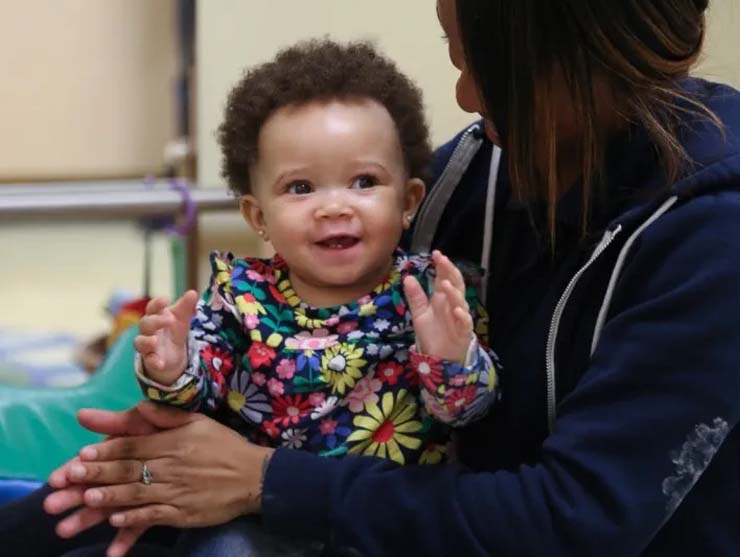There are also the quieter stories, the ones that have always been told inside hospitals — about waiting and diagnoses and family members nervously sitting bedside wanting to know their loved ones are safe, cared for, and not forgotten.
It’s for them that Dr. Robyn Howarth shows up at work every day.
The pediatric neuropsychologist sees children who are recovering from traumatic brain injuries. “These are patients who are medically stable,” she says, “but who still have intensive needs.” She understands the hierarchy of the moment, and that her daily visits with patients may not have the second-to-second urgency of someone on the frontline of the pandemic. But familiar faces like hers are of critical importance to families, the dose of consistency delivering something nearly as powerful as medicine — reassurance.
“The situation is already scary,” says Robyn of the families sitting with her young patients at the Children’s Hospital of Atlanta. “And now there’s another layer. I want families to know that we’re here and continuing to support them as best we can.”
It’s important work that she remains deeply committed to. So she was relieved — and a little surprised — when the child care center her 3-1/2-year-old daughter Emerson attends remained open as a hub center for healthcare workers. “I did not think I’d have a center,” she says of the Bright Horizons New Generations center. “I’ve been pleasantly amazed that they’ve been able to make it work.”
Still, using the center was a leap of faith that initially took some convincing. There was, of course, the safety of her daughter to consider. But there were also the children she works with — patients who are “medically complex” and perhaps immuno-compromised. “I would hate to put anyone at risk because I’m coming from outside.”
But thoughtful protocols instantly won her over: center staff members were all in masks; new procedures were introduced weekly; student numbers were significantly reduced. “The number of students was one of my big concerns,” she says. “Right now, it looks like one classroom per age group.” The staff was also tuned in, listening, and responding. “They’ve really been very receptive to hearing our ongoing feedback as we navigate this together. The staff has done an amazing job.” she says.
And then, of course, there was Emerson. Child development experts will tell you that children thrive with routine. And the presence of familiar faces — the teacher Emerson already knew and the friends she was still in class with — gave Robyn’s daughter something not unlike what Robyn gives her patients: a dose of normal in a world that’s anything but.
“It puts my mind at ease knowing that the center has remained a safe place of structure and normalcy,” she says. And the result is she gets to pay it forward to her patients. “With all the uncertainty in the world and with their own situation with their child,” she says, “the value of consistency has been multiplied exponentially.”





